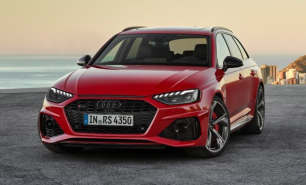“We could have made the cabin much tighter, like a sports car, but we didn’t, because even though it is one of the fastest cars in the world, at the same time we wanted to make enough space to drive every day.”
Those are Mr Nakamura’s words from 2007 again, highlighting how user-friendly the GT-R’s cabin was designed to be.
Ample, sedan-like space is available up front, so people can get in and not feel cramped or hemmed in at all. This is in keeping with the old three-box Skyline philosophy. Australians can see it in the 1973 Datsun 240K, a distant cousin of the GT-R.
Back to 2022, with its fascia angled slightly to the right and the binnacle moving vertically with the steering column, the Nissan's whole focus is on driver welfare, and so making it a better sports car in the process. Storage is excellent, as is ventilation, while vision out is enhanced by the upright windscreen pillars and acutely rectangular side window shapes that offer their own brutalist ambience.
Just a few years ago, the equally squarish dash would have seemed laughably dated – and some of the details still are – but the physical switchgear feels fresh again after an endless wave of newer models with touchscreens and sub-menus that require fiddly prodding, when a button does the job better. That they’re weighty and mechanical in their operation adds to the GT-R’s mystique.
Being a T-spec, swathes of suede-like material also bring real class to the interior, along with the green-on-green colour scheme, chunky gear lever, thick-rimmed three-spoke wheel, hefty paddle shifters and exacting build quality. Actual 3D dials are lovely to behold as well.
Racy, tombstone-style electrically-actuated front seats, too, rise to the occasion, enveloping their occupants with an inviting sumptuousness that brings both comfort and support for hours on end. They also feature a clever curled knob that deftly takes care of reclining and fore-aft duties in one. Does any other car offer such an item?
Several seasons ago, Nissan overhauled the centre console, cleaning up the intimidatingly complicated switches and simplifying the various, customisable digital readouts that provide deeply intricate accounts of engine, driving, performance and vehicle operation data via arcade-game-like analogue-look dials. It’s really over-the-top techy and yet also mid-2000s cool, and that should thrill the curious teenager in us all. The fact that Polyphony Digital of Gran Turismo video-game fame helped develop all this just makes the R35 all the more cooler.
However, the Nissan parts-bin digital graphics, especially in the multimedia system, betray the GT-R's advancing years, as they’re so obviously steeped firmly in another era. They convey info efficiently, but they’re out of place in such as an exciting, hedonistic machine.
Plus, in keeping with a car that was released the same year the original Apple iPhone was, there’s no adaptive cruise control, digital radio and wireless smartphone charger, let alone Apple CarPlay/Android Auto of any description. But you’ll find Bluetooth connectivity as well as active noise cancellation tech at work in there, along with an 11-speaker audio system of outstanding sound quality, a USB port and... even a plug for your iPod.
Moving out to the rear, there are two seats bisected by a centre console that runs the length of the cabin, providing a natural armrest as well as a drink holder and home for a pair of Bose speakers.
The cushions are comfy enough, as are the well-angled backrests, and an average-sized person like your 178cm tester can rest back there for short periods in relative civility as long as they don’t sit too upright to avoid scalps touching the rear window.
Finally, further back, there’s a pleasingly long, deep and wide boot area, offering 315 litres of richly carpeted cargo capacity. A high loading lip and odd shape limit the amount of luggage you can put inside, however, while there’s no in-cabin access like a ski-port or folding backrests. It’s a separate compartment.
But, like the rest of the Nissan’s cabin, the GT-R remains appealingly practical for a supercar. As Mr Nakamura said, “…you can use it for daily life, anywhere and anytime.”

